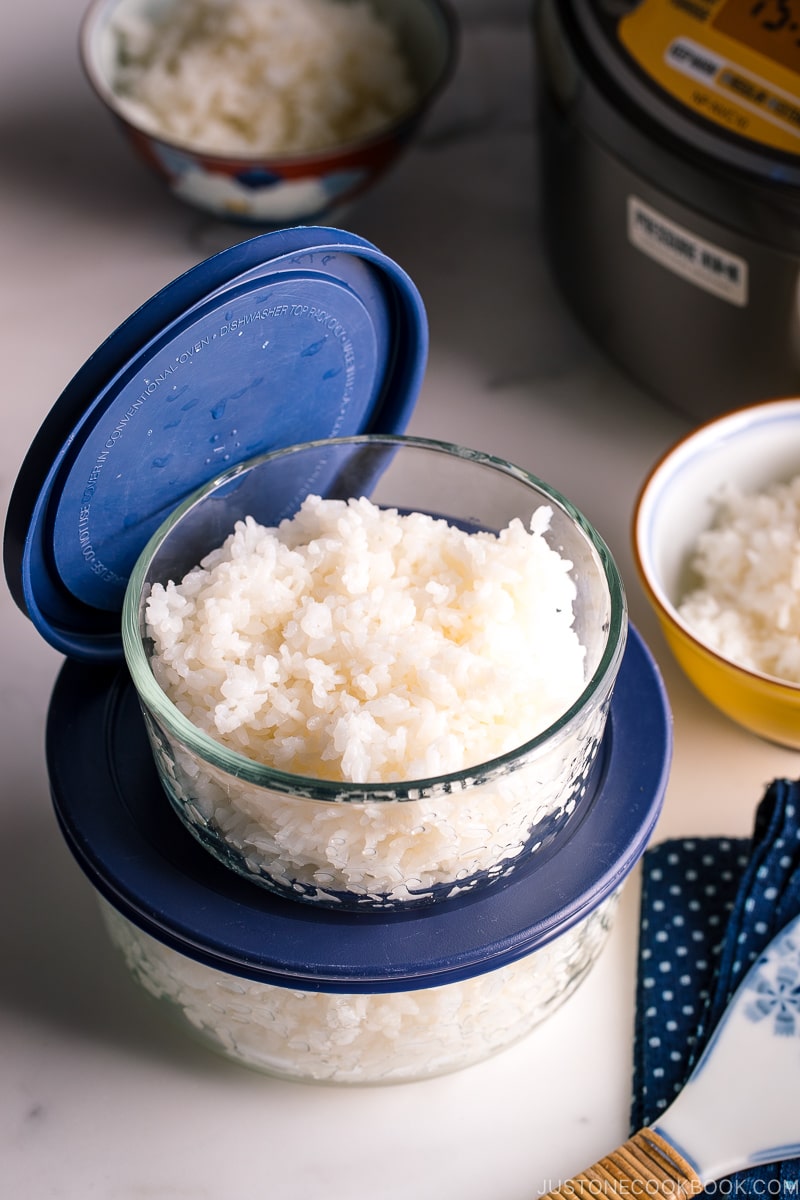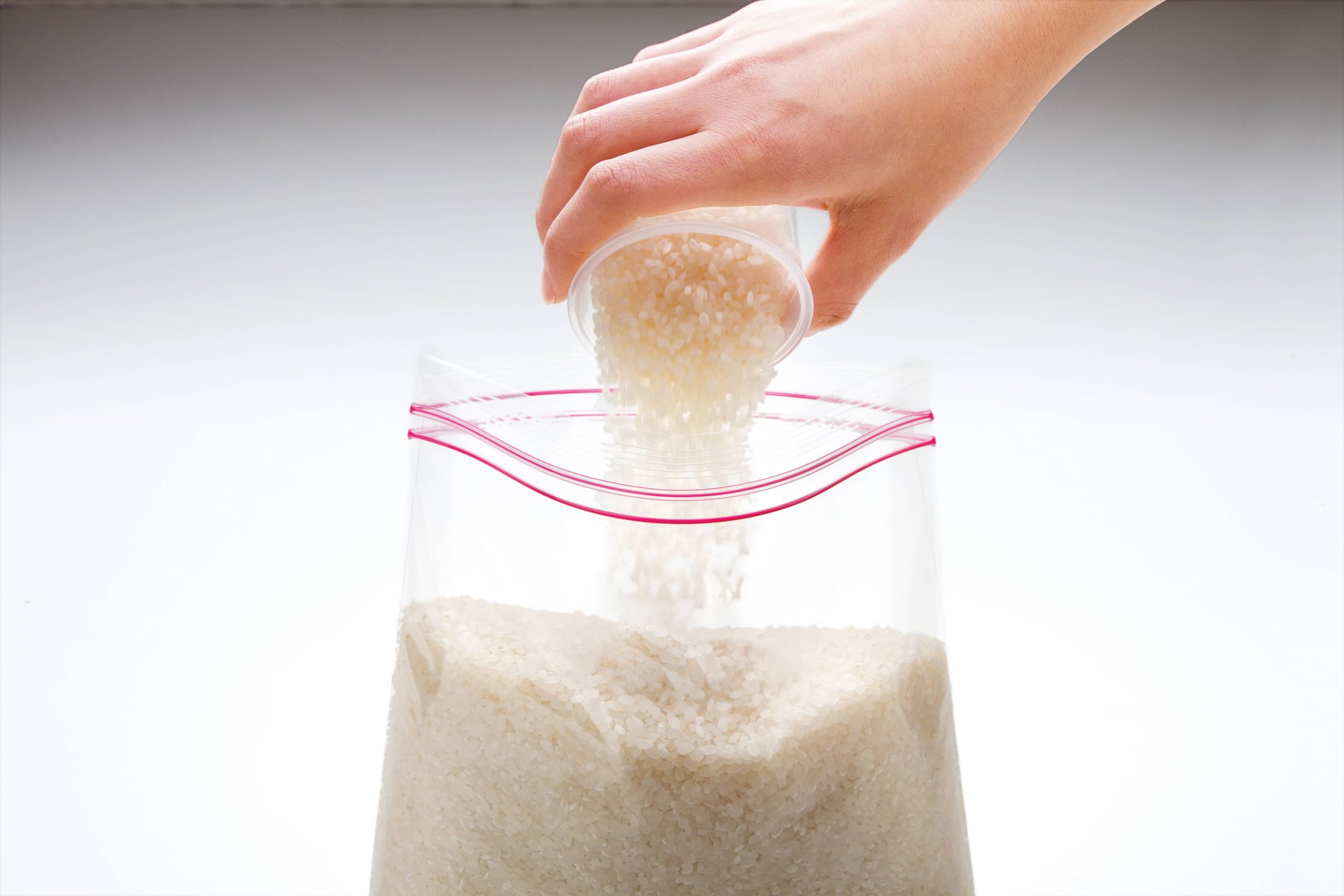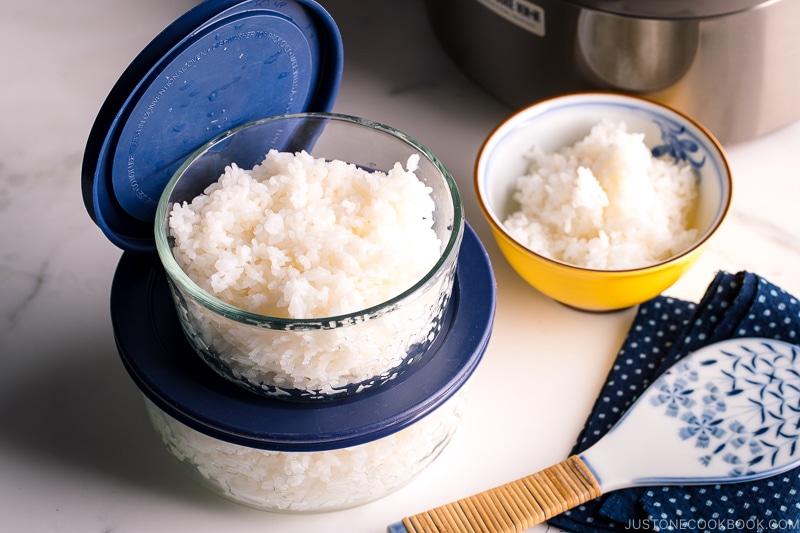To refrigerate rice, cool it to room temperature within two hours of cooking and store in an airtight container. Place it in the refrigerator promptly to maintain safety and quality.
Rice is a staple in many diets worldwide, and proper storage is crucial to prevent foodborne illness. Refrigerating rice promptly after cooking can help inhibit the growth of bacteria, such as Bacillus cereus, which can cause food poisoning. Quick cooling and sealing it in an airtight container minimizes the risk and preserves the rice’s texture and flavor.
It’s essential to note that rice should not be left at room temperature for extended periods. Adhering to these simple yet effective steps ensures your rice remains safe to eat and delicious for your next meal. By following these practices, you’ll extend the shelf life of your rice, keeping it ready for incorporation into a variety of dishes, from stir-fries to salads.
The Importance Of Proper Rice Storage
Rice is a staple in many diets around the world. Proper storage is key to keeping it safe and delicious. Let’s dive into why storing rice correctly matters.
Risks Of Improper Rice Storage
Storing rice the wrong way can lead to problems. Here are some:
- Bacteria growth: Bad storage can make bacteria grow. This can make you sick.
- Loss of taste: Rice can lose its yummy taste if not stored right.
- Pests: Bugs and other pests love rice. Poor storage invites them.
Benefits Of Refrigerating Rice
Keeping rice in the fridge has many good points. Here are a few:
- Stays fresh longer: Cold keeps rice good for more days.
- Reduces bacteria: A fridge can slow down bacteria growth.
- Keeps pests away: Pests cannot get to rice in the fridge.
Remember, putting rice in the fridge right after cooking is best. This helps keep it safe and tasty.
Types Of Rice And Storage Implications
Understanding how to store rice is crucial for its longevity. Rice varieties differ in their storage needs. Let’s explore these differences.
White Rice Vs. Brown Rice
White rice and brown rice have distinct storage requirements. White rice, with its husk, bran, and germ removed, lasts longer. Brown rice, with only the husk removed, retains natural oils. These oils can spoil if not stored properly.
To store white rice:
- Keep it in a cool, dry place.
- Use an airtight container.
- Avoid moisture and heat.
To store brown rice:
- Place in the fridge or freezer.
- Use airtight containers.
- Protect from temperature changes.
The Shelf Life Of Different Rice Varieties
Rice varieties have different shelf lives. Proper storage extends these times.
| Rice Type | Pantry | Fridge | Freezer |
|---|---|---|---|
| White Rice | 4-5 years | Not recommended | Not recommended |
| Brown Rice | 3-6 months | 6-12 months | 12-18 months |
| Basmati/Jasmine | 1-2 years | Not recommended | Not recommended |
Remember these tips to keep your rice fresh and tasty.
Preparing Rice For Refrigeration
Preparing Rice for Refrigeration is crucial to ensure freshness and safety. Rice can harbor bacteria if not stored properly. This guide explains how to cool and store rice correctly.
Cooling Down Rice Safely
Cool rice quickly to stop bacteria growth. Spread it on a tray for even cooling. Use shallow containers to reduce cooling time. Aim to cool rice within one hour before refrigerating.
Portioning Rice For Storage
- Divide rice into servings to avoid reheating multiple times.
- Use airtight containers or sealable bags to maintain quality.
- Label containers with the date to track freshness.
Choosing The Right Containers
Choosing the right containers is vital for refrigerating rice safely. The container’s quality can affect rice freshness and taste.
Best Containers For Rice Storage
Rice stays fresh and free from contaminants in the correct containers. Here are top choices:
- Glass jars – prevent odor absorption and are easy to clean.
- Plastic containers – lightweight and durable. Choose BPA-free.
- Stainless steel – resists rust and doesn’t harbor bacteria.
The Role Of Airtight Sealing
Airtight seals keep rice fresh longer. They block moisture and odors. Here’s why they matter:
- They prevent spoilage by keeping out bacteria.
- They maintain flavor and texture for enjoyable meals.
- They reduce waste, saving you money.
Temperature And Time Guidelines
Storing rice correctly is key for safety and taste. The right temperature and time are crucial. Learn the best practices for refrigerating rice below.
Optimal Refrigeration Temperatures
Keep rice safe and fresh in your fridge. The ideal temperature is below 40°F (4°C). This slows bacteria growth. Your refrigerator should maintain this temperature. Use a fridge thermometer to check.
How Long Can You Keep Rice Refrigerated
Rice lifespan in the fridge varies. Freshly cooked rice should cool quickly. Spread it on a tray for fast cooling. Once cool, place it in an airtight container. This method keeps rice good for 3-5 days. Do not leave rice out at room temperature. It increases the risk of food poisoning. Always sniff rice before reheating. Any off-odors mean it’s time to discard it.
| Type of Rice | Shelf Life in Fridge |
|---|---|
| White rice | 4-6 days |
| Brown rice | 3-5 days |
| Flavored or mixed rice | 1-2 days |
Label containers with dates. This helps track how long rice has been stored. Eating rice within these time frames ensures it’s delicious and safe.

Credit: www.justonecookbook.com
Freezing Rice: An Alternative Method
Did you know you can keep rice fresh by freezing it? Yes, freezing rice is a smart way to save it for later. This method works great for both white and brown rice. Let’s learn how to do it right.
How To Freeze Rice Properly
Freezing rice is simple. Follow these steps:
- Cook rice as you normally would.
- Let the rice cool down. Spread it on a baking sheet to speed up cooling.
- Put the cooled rice in airtight containers or freezer bags.
- Label the containers or bags with the date.
- Place them in the freezer.
This method keeps rice fresh for up to two months.
Thawing And Reheating Frozen Rice
Ready to eat the rice? Here’s how to thaw and reheat it:
- Thaw overnight in the fridge for best results.
- For a quick option, microwave it with a bit of water.
- Stir the rice to make sure it heats evenly.
- Make sure it’s steaming hot before eating.
Now you can enjoy your rice as if it was just cooked!
Avoiding Contamination
Avoiding Contamination is key to safe rice storage. This section covers essential practices to prevent harmful bacteria growth.
Cross-contamination Concerns
Keeping rice safe starts with understanding cross-contamination. This happens when bacteria from other foods touch the rice. It’s a serious risk.
- Use separate utensils for cooked and raw foods.
- Always wash hands before handling rice.
- Clean all surfaces before placing rice on them.
Hygienic Handling Practices
Proper handling is crucial for rice safety. Follow these steps:
- Cool rice quickly after cooking. Spread it on a wide plate.
- Store rice in a clean, airtight container to keep it safe.
- Keep the fridge below 5°C to stop bacteria growth.
Remember, always handle rice with clean hands and tools. This prevents bacteria and keeps the rice safe to eat later.
Reheating Refrigerated Rice
Reheating refrigerated rice often stirs up questions about safety and quality.
Let’s explore how to warm up chilled rice while keeping it delicious and fluffy.
Best Methods For Reheating
Choose the right reheating method to restore the rice’s warmth and texture.
- Microwave: Fast and convenient. Add a splash of water, cover, and heat.
- Stovetop: In a pot, mix rice with a bit of water. Stir on low heat.
- Steamer: Place rice in a steamer. Steam until hot and tender.
Maintaining Rice Quality And Texture
Keep rice moist and separate with these tips.
| Tip | Benefit |
|---|---|
| Store Properly | Prevents drying out |
| Reheat Gently | Keeps grains intact |
| Moisturize | Revives texture |
Common Mistakes To Avoid
Keeping rice fresh requires proper refrigeration. Avoid these common mistakes to ensure your rice stays safe and tasty.
Leaving Rice At Room Temperature
Rice left out too long can harbor bacteria. It’s important to cool rice quickly. Here’s the right way:
- Spread rice on a shallow tray.
- Cool for no more than one hour before refrigerating.
Storing Rice With Strong Odor Foods
Rice can absorb odors, affecting its taste. Follow these tips:
- Use airtight containers to keep rice separate.
- Place rice away from foods like fish or cheese.

Credit: www.zojirushi.com
Creative Ways To Use Leftover Rice
Don’t let leftover rice go to waste. With a bit of creativity, you can transform it into delicious meals. Below, find easy and tasty ways to use refrigerated rice.
Recipes For Refrigerated Rice
Refrigerated rice is perfect for quick meals. It’s pre-cooked, saving you time. Try these recipes:
- Fried Rice: Stir-fry with veggies and eggs.
- Rice Pudding: Mix with milk, sugar, and cinnamon.
- Rice Cakes: Combine with cheese, form patties, and pan-fry.
- Stuffed Peppers: Fill peppers with rice, protein, and bake.
Transforming Leftovers Into New Dishes
Turn leftover rice into exciting new dishes. Here are some ideas:
| Dish | Ingredients | Steps |
|---|---|---|
| Rice Pancakes | Rice, flour, milk, egg | Mix, form pancakes, fry until golden. |
| Rice Salad | Rice, veggies, dressing | Toss ingredients, chill, and serve. |
| Rice Burritos | Rice, beans, cheese, tortillas | Wrap ingredients, heat, and enjoy. |
| Rice Soup | Rice, broth, vegetables | Boil together, simmer, and serve hot. |

Credit: www.justonecookbook.com
Frequently Asked Questions
What Is The Best Way To Refrigerate Rice?
Cool rice to room temperature before refrigerating. Store it in an airtight container within two hours of cooking. Use refrigerated rice within 1-2 days for best quality.
Do You Have To Let Rice Cool Before Putting It In The Fridge?
Yes, allow rice to cool for about 30 minutes before refrigerating to prevent bacterial growth. Spread it on a plate to speed up cooling.
Can You Keep Cooked Rice In The Fridge?
Yes, you can store cooked rice in the fridge for up to 5 days. Ensure it’s cooled quickly and stored in an airtight container to maintain freshness.
How Do You Refrigerate Rice Without Drying It?
To refrigerate rice without drying it out, cool it quickly after cooking. Store in an airtight container and add a splash of water before reheating to maintain moisture.
Conclusion
Storing rice properly extends its freshness and prevents waste. Remember, cool it quickly, seal it tightly, and consume within days. For best results, follow these tips and enjoy delicious, safe rice every time. Your kitchen savvy keeps meals tasty and family healthy.

